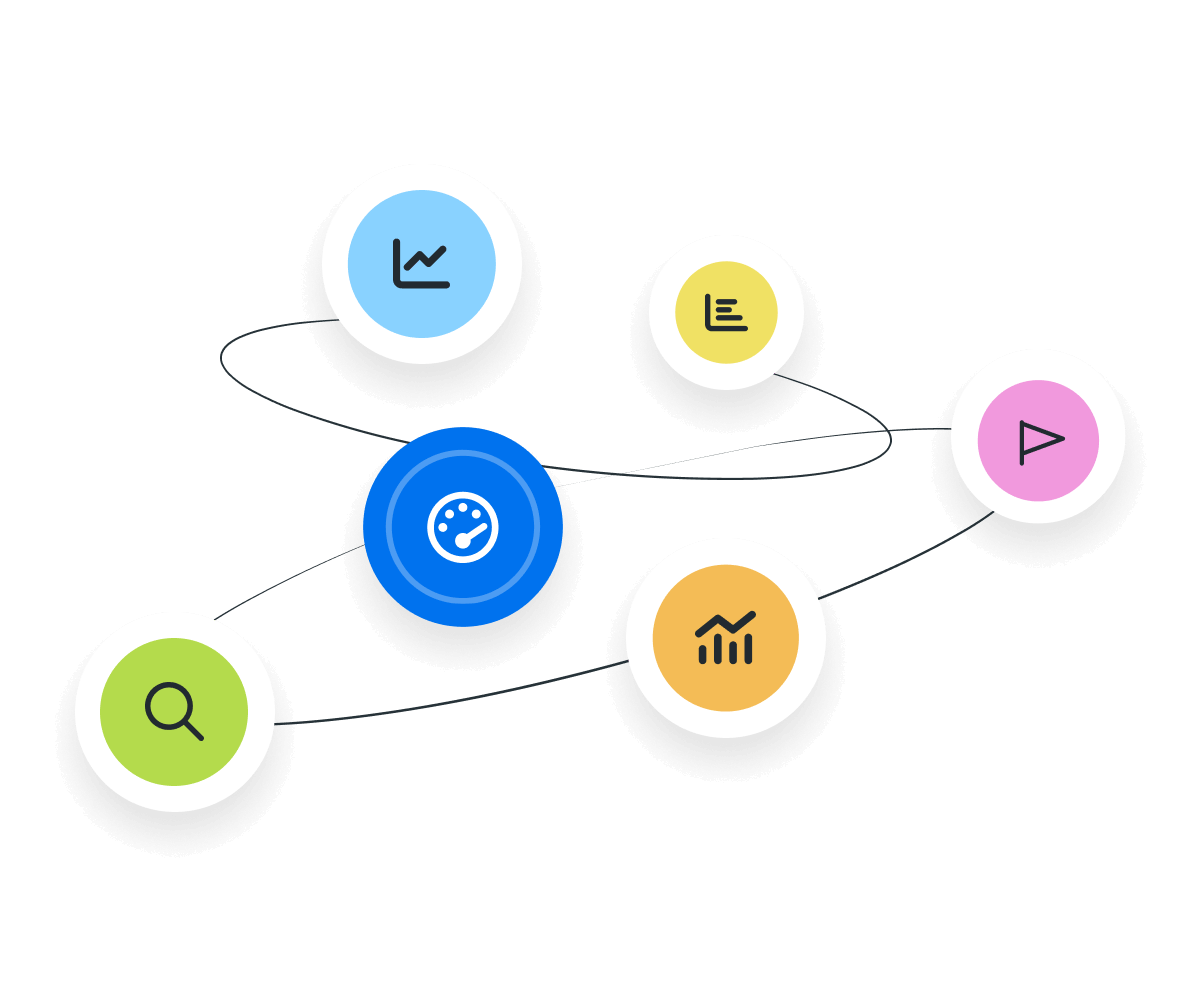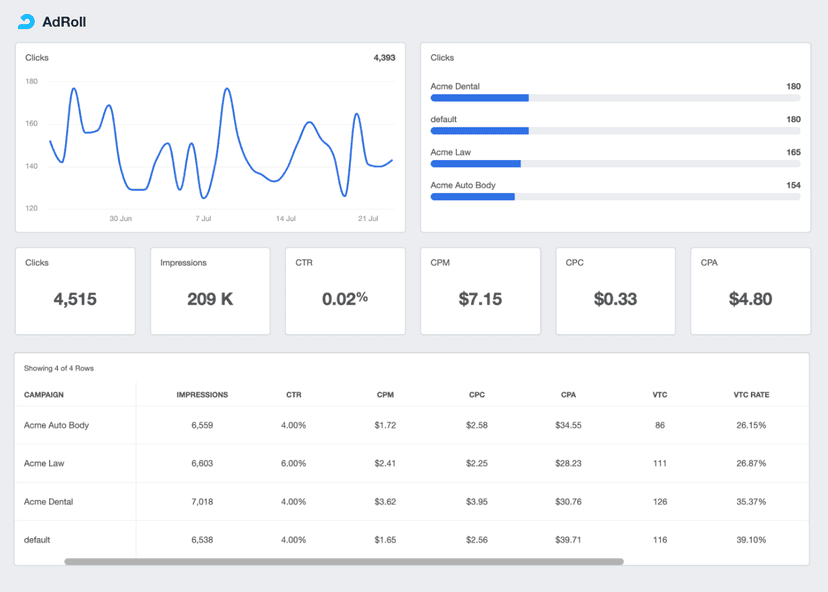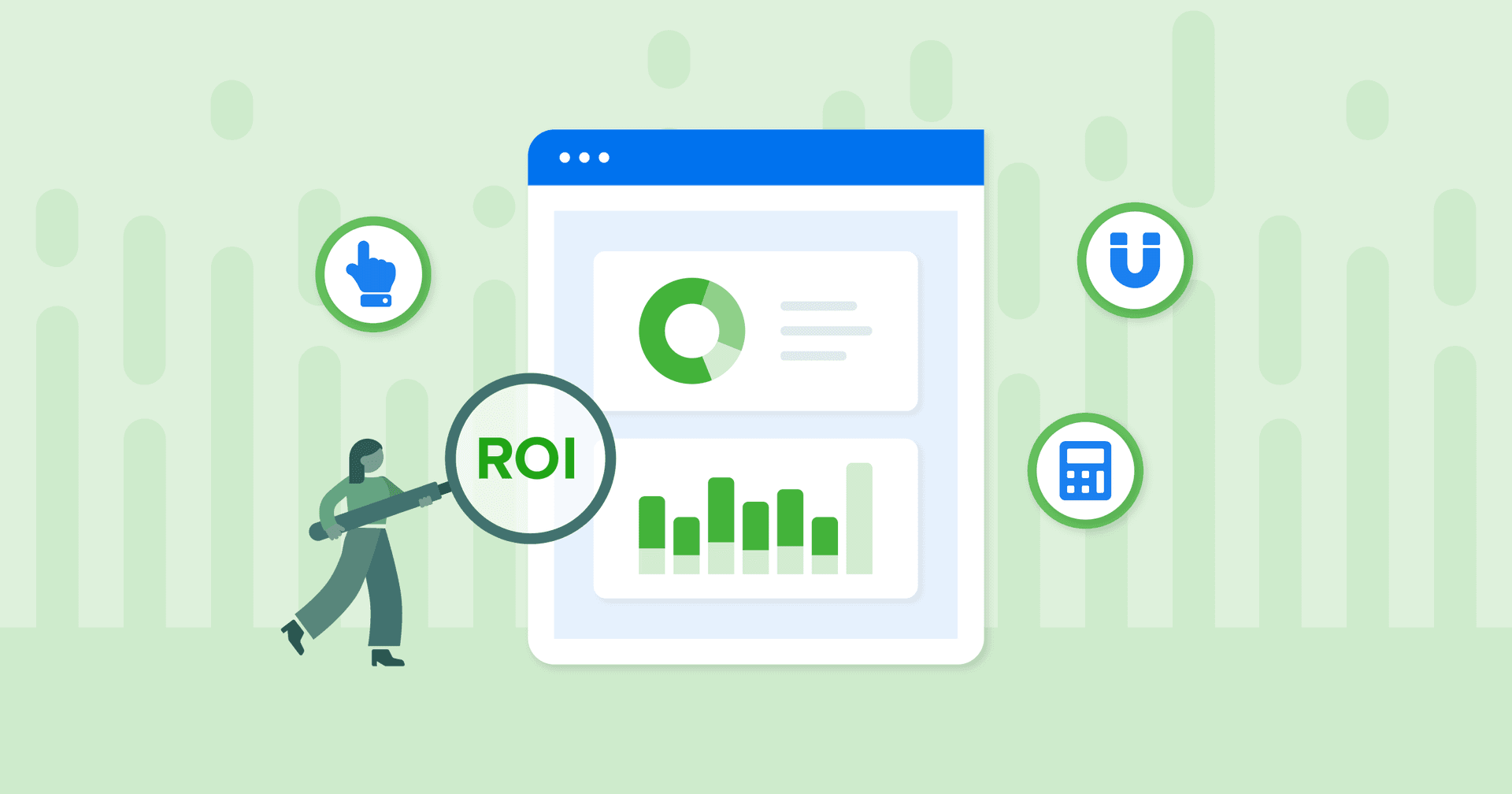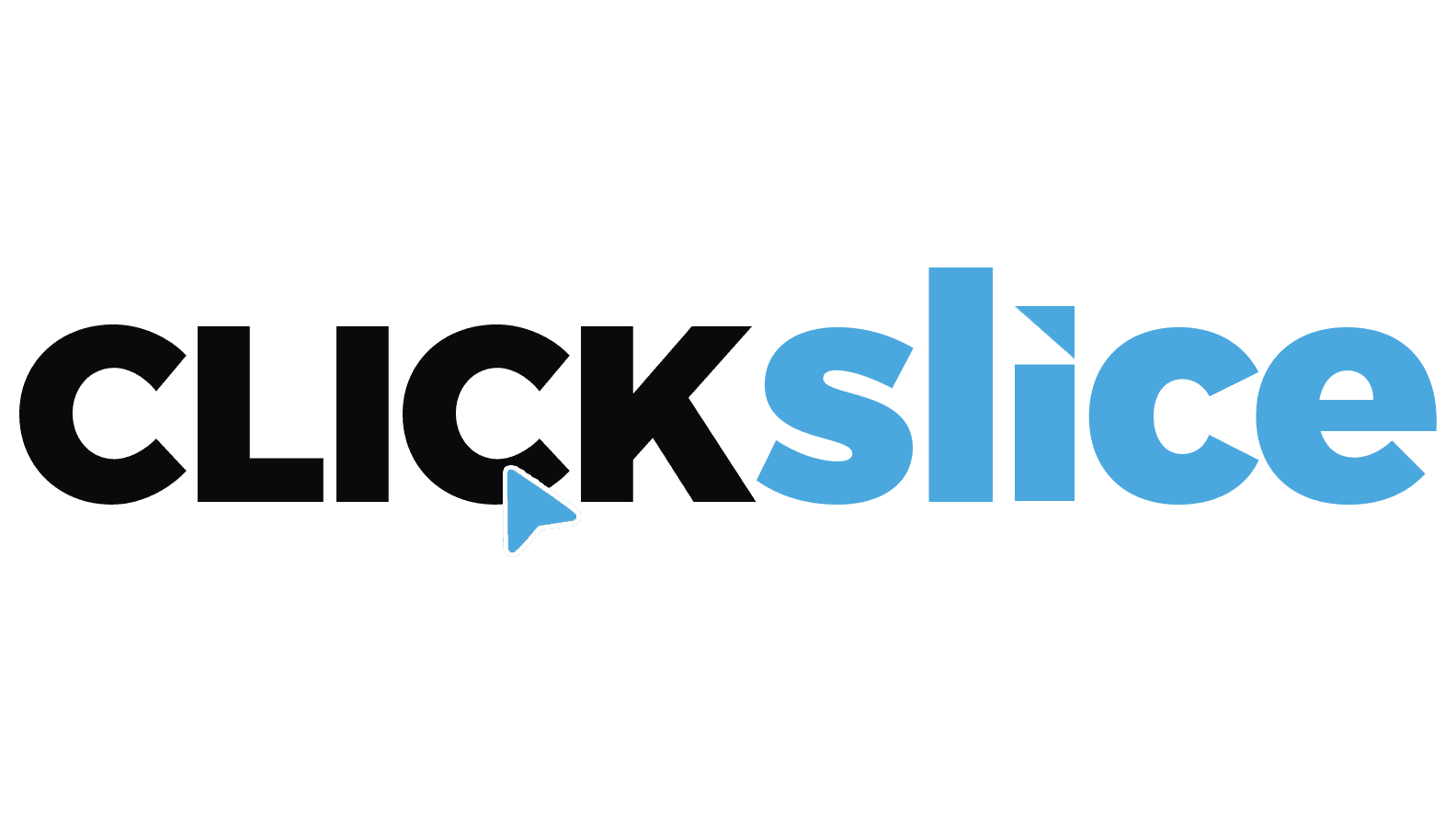Return on Ad Spend (ROAS)
Campaign Assessment
ROAS measures individual campaign success, guiding where to invest next.
Budget Allocation
Distribute marketing funds based on ROAS to maximize profitability.
Client Reports
A transparent way to showcase the bottom-line contribution of agency efforts.
Audience Targeting
Analyze ROAS to better focus on profitable audience segments.
Why Tracking ROAS Is Fundamental
ROAS is the marketing metric that provides a snapshot of a campaign's financial health. Every dollar spent is accounted for, offering a straightforward evaluation of whether an advertising campaign is worth the investment.
Knowing the ROAS for specific ad campaigns provides invaluable insights into their efficiency and financial success. However, the power of ROAS extends beyond merely summarizing the performance of a single marketing campaign. It is a diagnostic tool for an entire advertising strategy, justifying or challenging current advertising costs. Whether optimizing existing ad campaigns or planning new ones, ROAS offers a clear barometer of whether each ad dollar is being spent in the best way possible.
Stop Wasting Time on Manual Reports... Get PPC Insights Faster With AgencyAnalytics
How Ad Campaign ROAS Interacts With Other KPIs
ROAS interacts closely with other key performance indicators to provide a comprehensive view of advertising initiatives. For example, Cost Per Click (CPC) and Cost Per Thousand (CPM) give insights into what each click or impression costs, but they don't show profitability. ROAS fills that gap by indicating the revenue generated by these advertising costs. Similarly, Conversion Rate and Average Order Value (AOV) help illuminate consumer behavior and spending patterns, but ROAS shows if these metrics translate into profitable outcomes.
ROAS also connects how each specific ad campaign contributes to broader marketing strategy objectives. Keeping an eye on ROAS along with other KPIs, like Return on Investment (ROI) and profit margins, ensures a more nuanced and compelling read on campaign performance.
To show clients their ROI, track and report on the revenue and conversion data that are directly attributed to your PPC campaigns. This can include metrics like total sales, revenue generated, cost per acquisition (CPA), conversion rate, and Return on Ad Spend (ROAS). By comparing these metrics to the amount spent on advertising, you show clients the actual impact of their investment in your PPC services.
How To Calculate Return on Ad Spend
To calculate ROAS, divide the total revenue generated by a specific advertising campaign by the total cost of that campaign. The idea is to quantify how much revenue each advertising dollar produces. For instance, if an ad campaign generates $5,000 in revenue and costs $1,000, the ROAS is 5.
ROAS Calculation Example
What Is a Good ROAS?
In general, a ROAS of 4:1 or higher is considered good. It signifies that four dollars in revenue are generated for every dollar spent on advertising efforts. Agencies often aim for this ratio as a baseline for profitability.
What Is a Bad ROAS?
A ROAS lower than 2:1 raises red flags. This indicates that advertising campaigns need to generate more revenue relative to the costs, suggesting immediate reassessment is required.
How To Set ROAS Benchmarks and Goals
Agencies often use historical data to set benchmarks, tailoring ROAS goals to the specific client and campaign. Back-calculating ROAS targets helps hit revenue goals within a set budget.
For example, a higher minimum ROAS target is set if a client needs immediate cash flow. In contrast, acquiring new customers at a lower ROAS might be acceptable based on the customer's projected lifetime value.
ROAS expectations also differ between campaign types. For example, branded campaigns typically have higher ROAS due to established brand recognition, while non-branded campaigns usually require a higher advertising spend to generate the same revenue.
Breaking down ROAS by product category, geography, or even time of day offers more granular insights. This enables a more strategic allocation of ad spend across various ad platforms and initiatives. For instance, if the ROAS formula shows high returns during weekends, shifting more of the budget to those time slots makes sense.
Why Return on Ad Spend Matters to Clients
ROAS guides investment decisions regarding marketing and advertising efforts. It's one of the most crucial ad spend formulas because it translates money spent into tangible outcomes. For instance, clients look at ROAS to assess an ad campaign's effectiveness and understand how each dollar spent contributes to revenue generated.
When making business decisions, ROAS doesn't just sit at the table; it leads the conversation. It's a straightforward way for clients to see the financial impact of advertising initiatives. Every dollar spent has a traceable pathway to the bottom line, offering a real-time snapshot of investment health. This is especially important when budgets are tight, or scaling is on the horizon.
ROAS helps clients evaluate whether to pump more money into a successful campaign or pull back and reassess less effective efforts.
Why Return on Ad Spend Matters to Agencies
ROAS is a billboard metric for agencies that showcases skill, efficiency, and results. It's more than just a number on a dashboard; it's a key performance indicator that reflects operational prowess and strategic finesse. Agencies employ ROAS metrics to demonstrate their competence in delivering measurable outcomes. It's an external measure of competence that significantly influences client trust and future contract renewals.
Agencies also dissect ROAS data to identify areas for improvement, whether that's refining ad copy, adjusting bids, or optimizing for better-quality leads.
The ability to improve ROAS by tweaking negative keywords or optimizing ad spend is a powerful testament to an agency's strategic capability. It signals a mastery of advertising and business strategy, providing a dual-layered validation of an agency's comprehensive expertise.
Win Back Billable Hours by Automating Your Client Reporting
Best Practices When Analyzing and Reporting ROAS
Understanding the nuances of ROAS opens the door to more impactful advertising campaigns. It's not just about looking at a number; it’s about analyzing it from multiple angles to garner actionable insights. Precise data and multi-faceted evaluation make Return on Ad Spend not just informational but operational.
Ensure Data Accuracy
Valid ROAS insights require impeccable data integrity. Use automated data retrieval tools to avoid human errors and ensure tracking codes are implemented correctly.
Measure ROAS Over Time
Examine revenue metrics across different periods to catch seasonal shifts or assess the impact of new strategies. This perspective helps inform future ad spend.
Provide Channel-Specific ROAS Insights
Different platforms yield different ROAS results. Break down the ROAS by channel to identify high-performing avenues and optimize the budget accordingly.
Interpret Trends and Anomalies
Sometimes, ROAS numbers will surprise you. If you spot trends or anomalies, dig deeper. Identify what’s driving these patterns and whether they represent growth opportunities or signals to pull back.
Visualize ROAS Growth
Visual aids like graphs and dashboards simplify ROAS data interpretation. A concise visual summary is a persuasive tool when sharing results with stakeholders.
Align With Client Objectives
Position ROAS within the client’s broader goals, whether focused on immediate revenue or long-term brand building. This context strengthens the agency's role as a strategic asset.
Google Ads Dashboard Example

Related Integrations
How To Improve ROAS
Improving Return on Ad Spend isn't just about cutting costs; it's also about refining the strategy for higher impact. Here are 3 quick tips to help amplify campaign ROAS in meaningful ways.
Refine Targeting
Don't waste ad dollars on an audience that's not interested. Fine-tune demographic and psychographic targeting to reach prospects more likely to convert.
Adjust Bidding Strategy
Implement bidding strategies based on data, not gut feelings. Test automated bidding options to optimize for ROAS, saving time and increasing efficiency.
A/B Test Ads
Even small changes can have big impacts. Use A/B testing to find which ad versions (and landing pages) perform better and focus the spend there.
Related Blog Posts
See how 7,000+ marketing agencies help clients win
Free 14-day trial. No credit card required.









![The Ultimate Google Ads Optimization Checklist [Guide & Tips] An Easy to Follow Guide to Google Ads Optimization + a Downloadable Checklist](/_next/image?url=https%3A%2F%2Fimages.ctfassets.net%2Fdfcvkz6j859j%2F1RGRDTvZOx2bH3PCJMjDsD%2Fc239f0aed512ea0e761f3713dd6e59ac%2FGuide-to-Google-Ads-Optimization-Checklist.png&w=1920&q=75)







